[javascript protected email address]
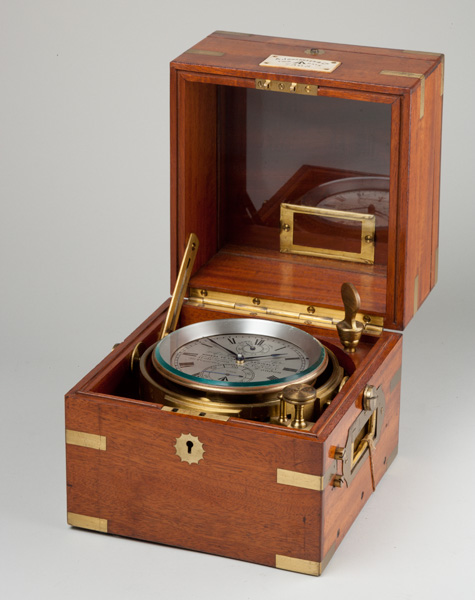
Asmus Johannsen & Co., London, No. 7568

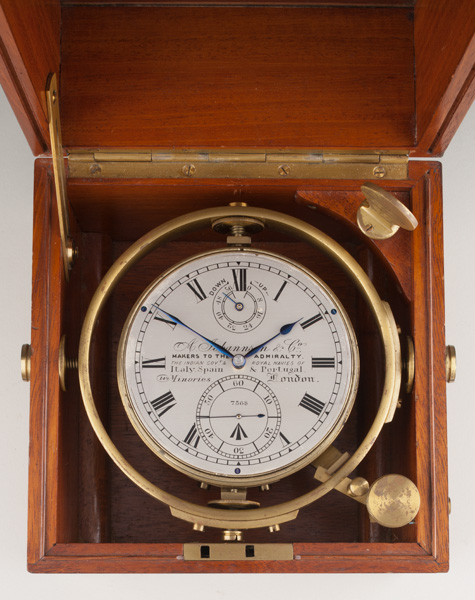
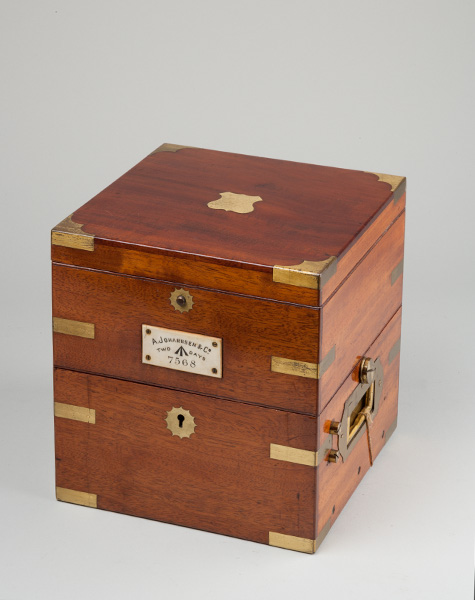
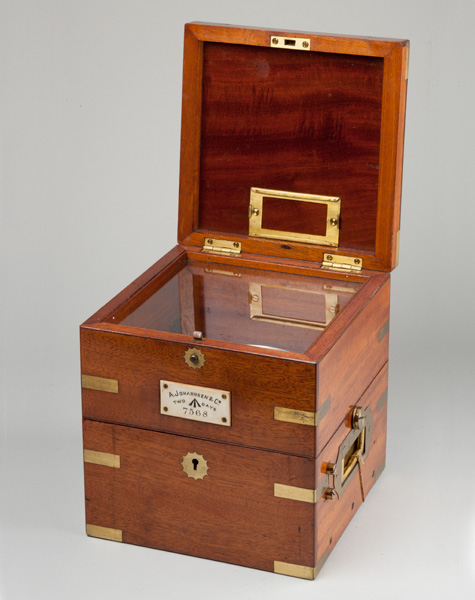
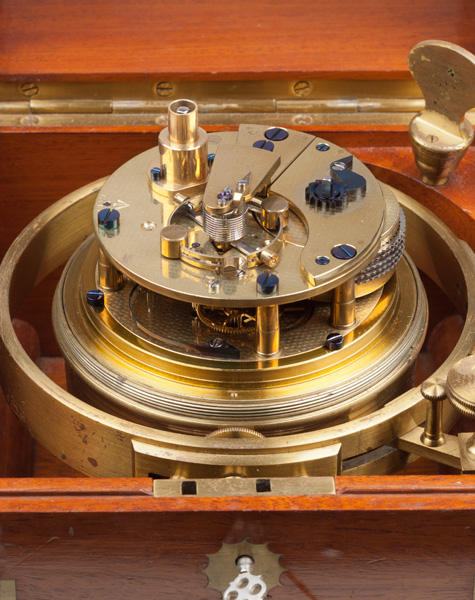
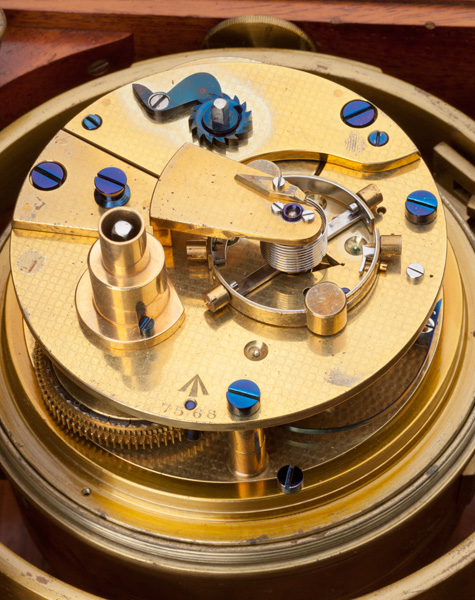
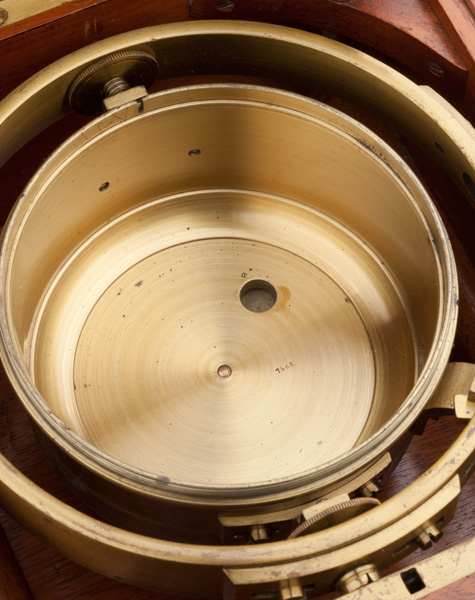
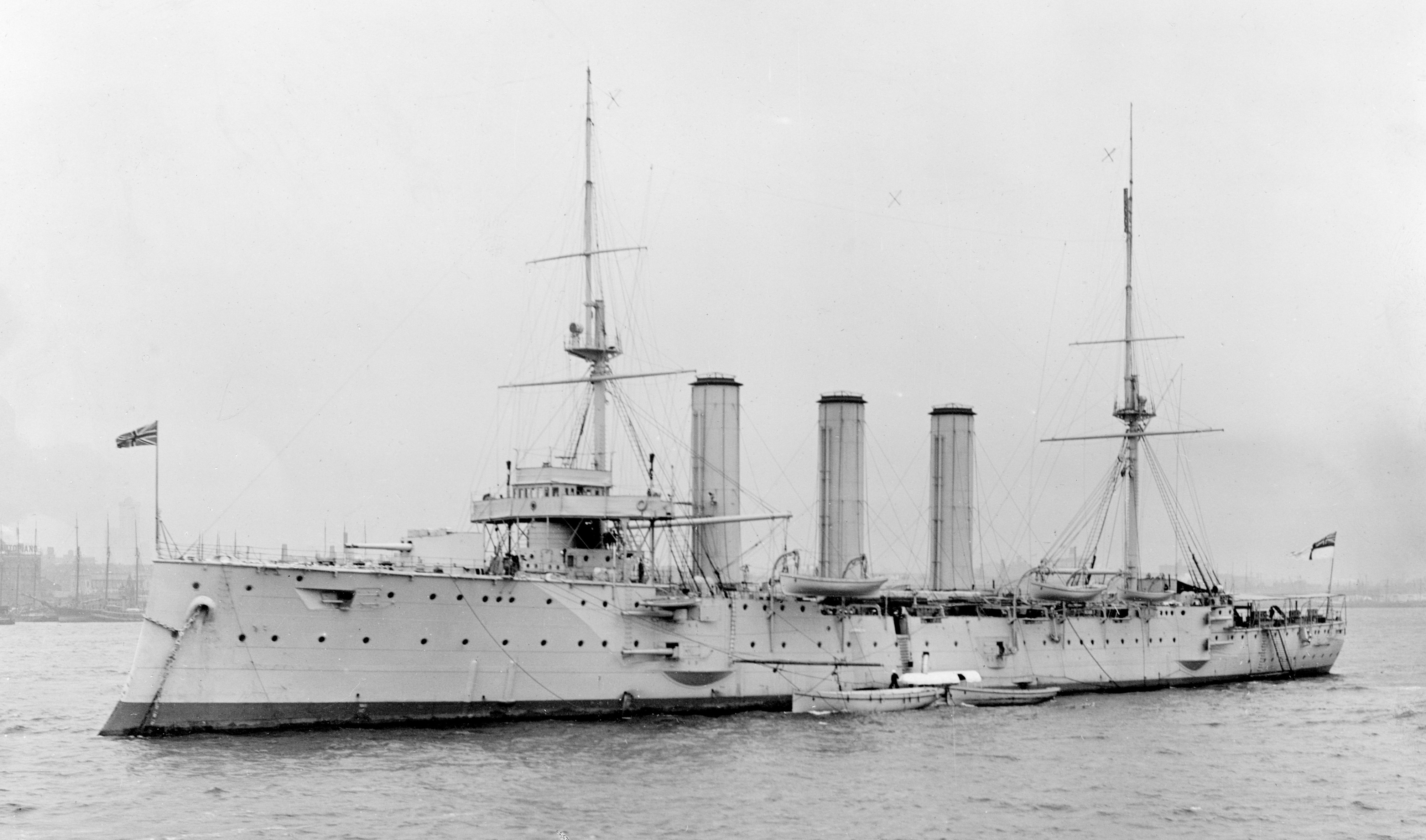
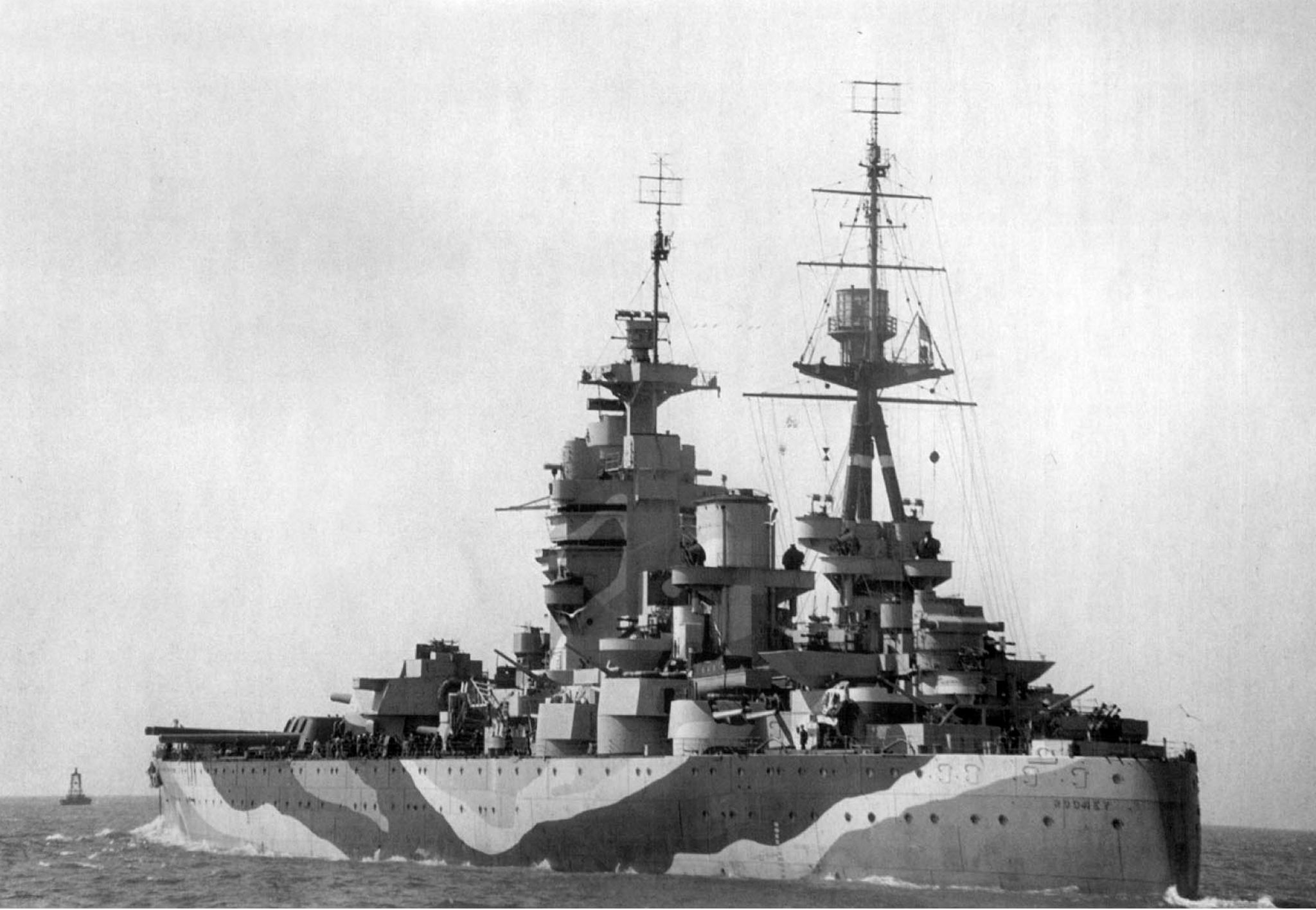
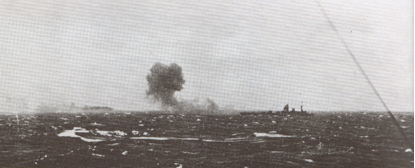
Circa 1916
Sold
184mm. square box
A very fine & historically fascinating mahogany and brass-lined Royal Observatory two-day marine chronometer. DIAL The 101mm. silvered engraved brass dial has Roman chapters with outer minute track, blued steel hands, the centre is signed A. Johannsen & Co. MAKERS TO THE ADMIRALTY, THE INDIAN GOVt. & ROYAL NAVIES OF Italy, Spain& Portugal. 149 Minories, London. With up-and-down sector beneath XII calibrated 0-48 and seconds ring at VI engraved with the Government Broad Arrow and serial number 7568, both with blued steel hands. MOVEMENT The full-plate movement has well spotted plates with four ring-turned pillars secured with blued steel screws at the top plate which is further engraved with the Government Broad Arrow and serial number 7568, chain fusee and spring barrel, the escapement with cut bimetallic balance with circular heat compensation weights, palladium helical balance spring and Earnshaw-type spring detent escapement with jewelled locking stone. BOX With brass bowl punch-numbered 7568 in the base, the underside has a spring-loaded winding cover and is stamped H.S. 1 with the Government Broad Arrow. The brass-bound mahogany box has a vacant brass cartouche plaque to the original top lid and star escutcheons to the lock and lid button. The centre section is applied with a bone plaque engraved A. JOHANNSEN & Co. TWO DAYS 7568 with the Government Broad Arrow, recessed brass drop handles to the sides. Original numbered tipsy winding key ASMUS JOHANNSEN Danish born Asmus Johannsen is recorded in Watchmakers & Clockmakers of the World, Volume 2, (Brian Loomes) as working in London from 1863-9. He is also listed in Chronometer Makers of the World (Tony Mercer) as a great maker supplying other makers. He worked from various addresses in London from 1859 before finally moving to 149 Minories in 1865. The firm continued in business until 1937. ROYAL OBSERVATORY RECORD Johannsen 7568 is listed in the Royal Observatory ledger of receipts as being purchased on February 16th 1916. She served on a number of interesting vessels, perhaps the most interesting being H.M.S. Cumberland from 1928-1935 and then subsequently H.M.S. Rodney in 1936. No. 7568 saw her last service charting the seas around Singapore aboard H.M.S. Dampier and was finally taken off the Observatory books in January 1975. H.M.S. CUMBERLAND Cumberland served on the China Station with the 5th Cruiser Squadron from 1928 until 1938, returning to the UK in March 1935 for a refit. In 1938, she joined the 2nd cruiser squadron on the South American station. At the start of the Second World War in 1939, Cumberland was assigned to 2nd Cruiser Squadron Force G, the South American Division.[1] At the start of December she was forced to self-refit in the Falkland Islands, thus depriving the force of their strongest unit. Without her, HMS Exeter, Ajax and Achilles engaged the German raider Admiral Graf Spee in the Battle of the River Plate on 13 December. Cumberland received a garbled indication that a contact was being made and moved north to reinforce, arriving at the River Plate at 22:00 14 December, after steaming for 34 hours. Admiral Graf Spee had put into neutral Montevideo and was trapped there, as Cumberland along with Ajax and Achilles (Exeter having been heavily damaged) patrolled the estuary, resulting in Admiral Graf Spee being scuttled by her crew on 17 December. Literature HMS Cumberland, A Classic British Cruiser in War & Peace by Patrick Boniface, Periscope Publishing, 2006 HMS CUMBERLAND (image 8) H.M.S. RODNEY HMS Rodney (pennant number 29) was one of two Nelson-class battleships built for the Royal Navy in the mid-1920s. The ship was named after Admiral Lord Rodney (1718-1792). The Nelsons were unique in British battleship construction, being the only ships to carry a main armament of 16-inch (406 mm) guns, and the only ones to carry all the main armament forward of the superstructure. As her superstructure was located aft of midships like RN fleet oilers whose names carried the ...'ol' suffix, she was sometimes derisively referred to as "Rodnol". Commissioned in 1927, Rodney served extensively in the Mediterranean Sea and Atlantic Ocean during World War II. Rodney played a major role in the sinking of the German battleship Bismarck in May 1941. During and after Operation Torch and the Normandy landings, Rodney participated in several coastal bombardments. In poor condition from extremely heavy use and lack of refits, she was scrapped in 1948. LITERATURE HMS Rodney, Warships of the Royal Navy by Iain Ballantyne, Pen & Sword, 2008 HMS Rodney (image 9) HMS Rodney firing on Bismarck, which can be seen burning in the distance (image 10)
